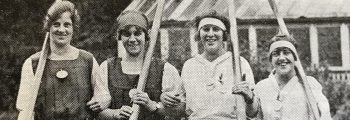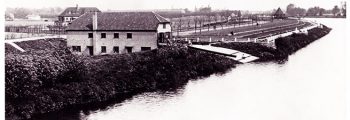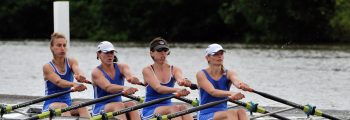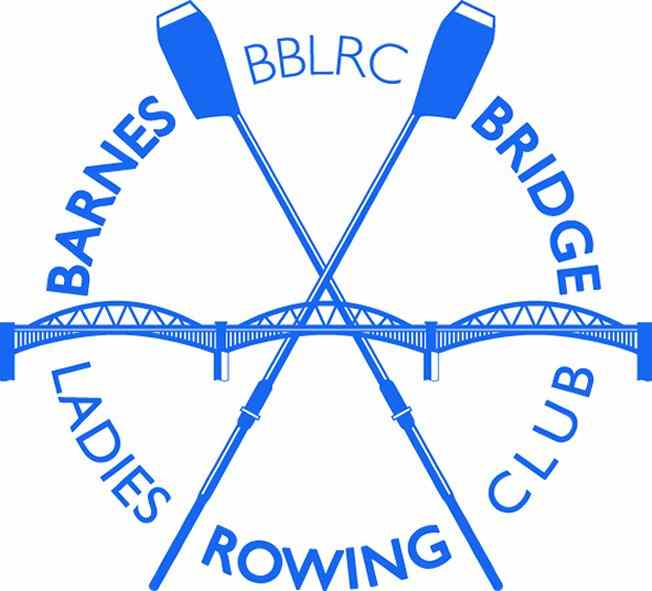Our History
Barnes Bridge Ladies Rowing Club may now be a relatively small club in comparison to some of the other Tideway giants, but it has played a huge part in the history of women’s rowing. To this day, it retains the strengths of being one of only two ‘women only’ clubs in the UK.
Roughly a century after the club came into being, the numbers of people taking part in active rowing across the UK have grown enormously and the participation of women in the sport is far greater.
In this broader environment, BBLRC achieves its fair share of competitive success. But go back to the nineteen-sixties and seventies and times were very different. If you were looking for top-class women’s crews, international oarswomen or the first-ever female Olympic rowers, the Civil Service Boat House was one of the most likely places to find them.
Civil Service
The origins of BBLRC lie in the Civil Service. Some of the precise history is unclear, but the Civil Service Women’s Headquarters Rowing Club (CSWHQRC) was created in the early 1920s for Civil Service women whose departments hadn’t already set up their own rowing clubs. The Ministry of Health, the Ministry of Labour, HM Customs & Excise, the Post Office Savings Bank and the London Telephone Service all had separate clubs which women could join at the time, so the CSWHQRC swept up all the rest.
Civil Sevice Rowing Association

Following the formation of the Civil Service Sports Council in 1921, a Civil Service Rowing Association was set up, to bring all the related clubs under one umbrella, and in September 1922 they held their first Civil Service (CS) regatta at Eel Pie Island, Twickenham. This is a famous photograph of four ladies after competing at this event, and it seems this is the beginning of our club history.
Civil Service Boathouse

At the time these various clubs were mostly housed at Tom Green’s Boat House, which was situated just upstream from Barnes Bridge. The Civil Service men’s club, Cygnet RC, moved into their newly-built boathouse in 1930, but the ladies continued at Green’s until later. In fact, a couple of other women’s clubs, St George’s and United Universities (UUs), also took space at the Civil Service Boat House (CSBH) when they left Green’s, only moving out in 1972 when competition for rack-space became too great and the Civil Service Ladies had the stronger case.
Heart of Women’s Rowing
In the very early days, Civil Service ladies were at the heart of women’s rowing and had some great successes. For example, Gladys Barnes, a CSWHQ member, was part of crew representing England in various regattas in Australia in 1938, including the Australian Championships, winning every race on the tour. Gladys (referred to as Miss Barnes in minute books, but also known as Barney) went on to be a long-serving captain of the CS Women’s HQBC. One of the Club’s boats, a Clinker built in 1960, was named Barney when Miss Barnes was club president, one section can be seen in the Henley River and Rowing Museum collection.
Wins at WeHoRR
The Civil Service ladies won the Women’s Head of the River Race in 1939, then the Second World War (1939-1945) interrupted activity – in fact, the CS Boathouse was requisitioned by the government during these years and clubs had to make alternative arrangements. Some rowing continued but it was not really until the early 1950s that activities picked up – the Women’s Eights Head of the River race re-started in 1950, the Civil Service won it for a second time in 1951.
International representation
International rowing for women was still in its infancy in the 1950s. The Civil Service Ladies were, however, represented at the highest level as competition developed. The first official Women’s European Championships took place at Bosbaan, Amsterdam, in August 1954 and Pauline Grudgings from CSHQLRC was selected to row in the GB VIII.
CSLRC collective
St George’s moved initially back the short paddle upstream to the boathouse which replaced Green’s, then struggled to continue as an independent club and several of its members found longer-term homes as part of CSLRC (others going to Twickenham RC). UUs was always a very small club, but had an extraordinarily high-quality membership. When the time came to move out, the UUs shifted to Thames RC where they formed the core of a new women’s section which, of course, went from strength to strength thereafter. Links remain at the more ‘senior’ end of our clubs’ memberships.
Growing and fundraising
With all the CSLRC, St George’s and UUs boating from CSBH, this was most definitely the place to be in the nineteen-sixties and early seventies. Clearly, given the lack of rack space, the Civil Service Ladies were growing. The minute books record the endless theme of raising money for new equipment, particularly by means of jumble sales and social events which of course doubled as fun and – in some periods at least – a reliable way of forging relationships with Cygnet Rowers.
On the BBC
From time to time, more high-profile efforts were made to raise money. For example, in December 1969 the club organised a sponsored row from Barnes Bridge to Waterloo Bridge – two CSLRC crews took part in order to raise £600 to purchase a new shell Eight. This made the local press and was also filmed by the BBC, creating an enormous amount of interest and excitement. In fact, due to a miscalculation of tide times, the brave ladies rowed on to Tower Bridge before turning back, returning against the tideaccording to a report in Rowing magazine.
Top of the sport
This new-found fame was set to continue with stunning results in the next decade. In the early seventies, when the club minutes (handwritten in proper minute books) still showed those present as Misses and Mesdames (!), the club was fielding numerous successful crews including sending an Eight to a regatta in Amsterdam in June 1970. The Club at that time included people still to be seen on the water now or at Club events. Barnes Bridge LRC current Vice Presidents Jackie Darling and Pat Sly, and president Rubina Curtis, were achieving success at the very top of the sport. CSLRC was one of the best clubs at which to row – and certainly, at times, the best.
Heyday
Civil Service Ladies (including Jackie Darling, Rubina Curtis and Pat Sly) were the winning Four for England at the 1971 Home International Regatta. The following decade was undoubtedly the heyday of the club, at least from a competitive point of view. Throughout the nineteen seventies, as women’s rowing established itself as a serious and ambitious sport, CSLRC was represented in almost all the GB squads and final crews.
Olympic representation
The 1976 Olympics in Montreal, was first year that women’s rowing was included, CSLRC club members Clare Grove, Lin Clark and Pauline Wright were selected to row for Great Britain. CSLRC members Lin Clark [3] Liz McVeigh (nee Paton) [5], Nicola Burbidge (nee Boyes) [7] and Pauline Wright (cox) rowed in the GB women’s Eight competing in the 1980 Moscow Olympic Games. Throughout this decade, CSLRC crews won medals at the National Championships and there were consistently CSLRC members in the England or GB crews at National or International competitions, including the European and World Championships.
‘SERVICE’
The club name, originally Civil Service Women’s Headquarters Rowing Club, has changed several times over the years, with records sometimes showing some confusion between Ladies’ vs Women’s and Rowing vs Boat and the inclusion of HQ or not, but this settled as Civil Service Ladies Rowing Club in the early 1970s, and was shortened to ‘SERVICE!’ in the shouts of encouragement from supporters on the bank during races.
Becoming BBLRC
The club re-named itself Barnes Bridge Ladies in 1997. By this time, there was no longer a requirement to have a percentage of Civil Servants in the membership and the change of name would make this clearer to potential new members. Having shared a Boathouse with Cygnet for such a long time, there have been discussions of varying intensity over the years about whether the two clubs should merge. The most protracted debate in 2000/2001 probably came closest, but the consensus was to continue separately.
Recent successes

A BBLRC crew was the first women’s boat to finish in the Top Ten of the Vesta Veterans’ International Eights Head of the River Race in March 2010, just going to show that the club still has what it takes in the twenty-first century.

